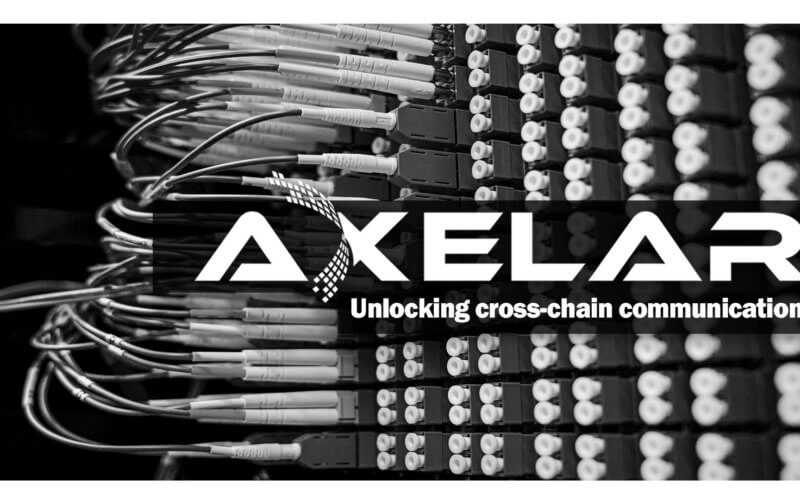Axelar Network – The Future of Decentralized World
In 2015, the first smart contract was released on Ethereum. Since then, DeFi ecosystem has been exploding.
But as more users are pouring in, Ethereum is struggling to keep up. Solving the scalability issue without sacrificing decentralization isn’t an easy task, especially when all the decisions must be done via voting. This resulted in ridiculously high gas and slow confirmation.
Moreover, a single blockchain is not suitable for all use-cases and applications. For example, a payment system would require a fast transaction finality time while some applications might want to focus more on security or privacy.
This leaves the room for new blockchains trying to tackle these problems such as Binance Smart Chain, Solana, Avalanche, Near, Fantom, Terra, Polygon. Or Layer 2 solutions such as Optimistic, Arbitrum and zkSync. Each has their own advantages and features suitable for different usage. However, as new blockchains are emerging, they introduce a new problem – “Interoperability”
- How can we make these blockchains communicating with each other regardless of their technical/architectural design?
- How can we make the users be able to transfer their assets across any blockchains easily and securely?
- How can developers create applications that work on any chains?
Axelar is the answer to these questions.
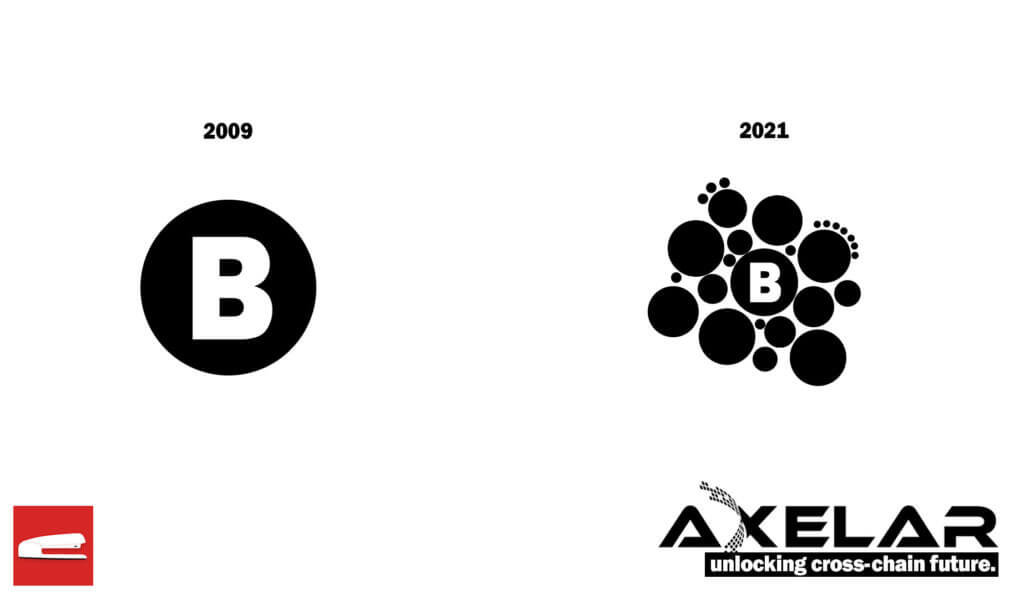
The Problem of the Existing Solutions
Currently, most people are using pairwise-bridges when transferring asset cross chains (Ex. Shuttle bridge between Terra and BSC and Binance bridge between Ethereum-BSC) This has been a working solution at the moment. However, in order to create bridge between chains, a new development effort is required on both sides to facilitate the transfer. This is not sustainable and scalable as the bridge must be maintain and update if there’s any changes on consensus rules or transaction format in the future. (Not to mention users have to “trust” the bridge provider with their funds during the transfer)
Moreover, there is also a security concern when bridging asset to another chain (You can read the full reddit thread written by Vitalik Buterin here) For example, attacker can perform a 51% attack on a “less secured” blockchain to revert the transaction on sending side after the receiving side transaction is already confirmed. This way, attacker will create a duplicate asset on both sides.
To solve the interoperability problem, some blockchains within the same network or using same consensus engine such as Polkadot or Cosmos have their own inter-chain communication protocol. For example, users can transfer asset from Terra safely to Secret Network or Osmosis via IBC native protocol. However, a bridging solution is needed when transferring outside the Cosmos network.
How Axelar Works?
Think of Axelar as a blockchain to connect blockchains.
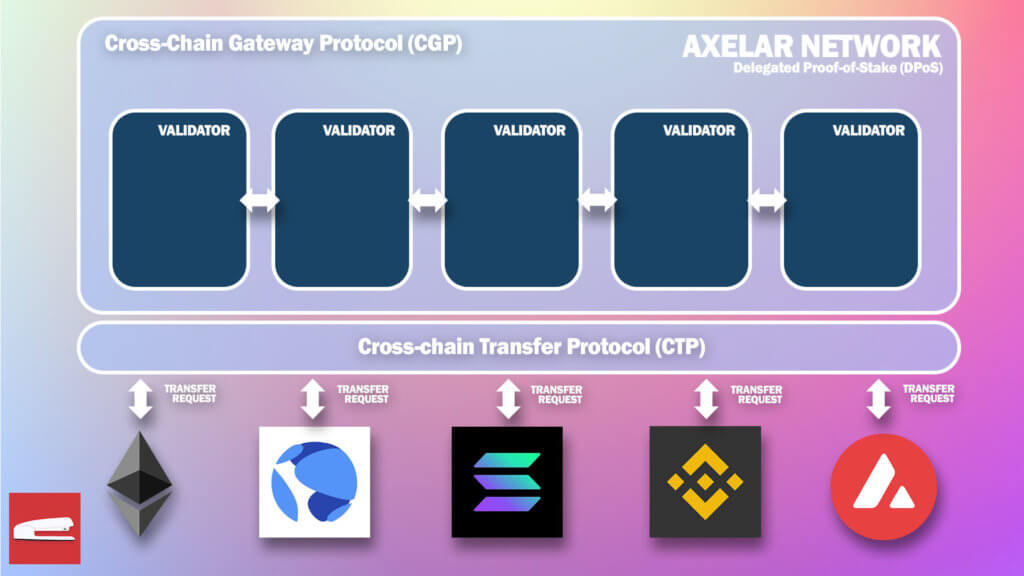
Any blockchain can join the Axelar network and make a cross-chain transfer to any other chain with just a simple API request. This is the same concept with websites or applications making GET/POST request via HTTP/HTTPS. Axelar named this “CTP” or Cross-chain Transfer Protocol. Any pair of blockchains will be able to communicate with each other while requiring only minimal development effort.
Axelar uses large sets of validators with Delegated Proof-of-Stake (DPoS) model to create a secured and decentralized network. Anyone can join and help validating the transaction. 90% of validators must have a consensus before any transaction can be made. And users will have a governance control via voting. A mechanism responsible for connecting blockchains together and routing asset across them through Axelar network is “CGP” or Cross-Chain gateway Protocol.
To understand more on how Axelar works, let’s walkthrough the example.
Cross-chain Transfer with Axelar
Suppose that user want to transfer (or bridge) 10 ETH on Ethereum chain to Solana. Here is what will happen (Please noted that this is a simplified explanation and there are lots of processes going on within Axelar network during the transfer. See whitepaper for more details)
First, the wallet app will make a transfer request via CTP (Cross-chain transfer protocol) with necessary information (receiving address, amount, token, etc.)
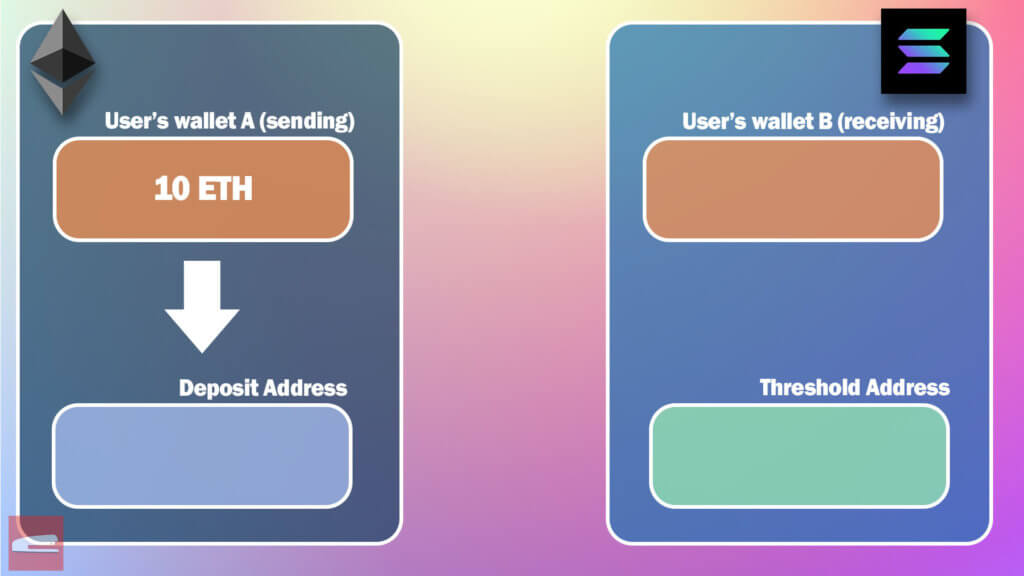
Axelar network will create a “new” deposit address on the sending side (in this case, Ethereum) for the wallet app. Then, the wallet app will send 10 ETH to the deposit address. (No token can be spent or transfer from this deposit address unless approved by Axelar validator’s consensus)
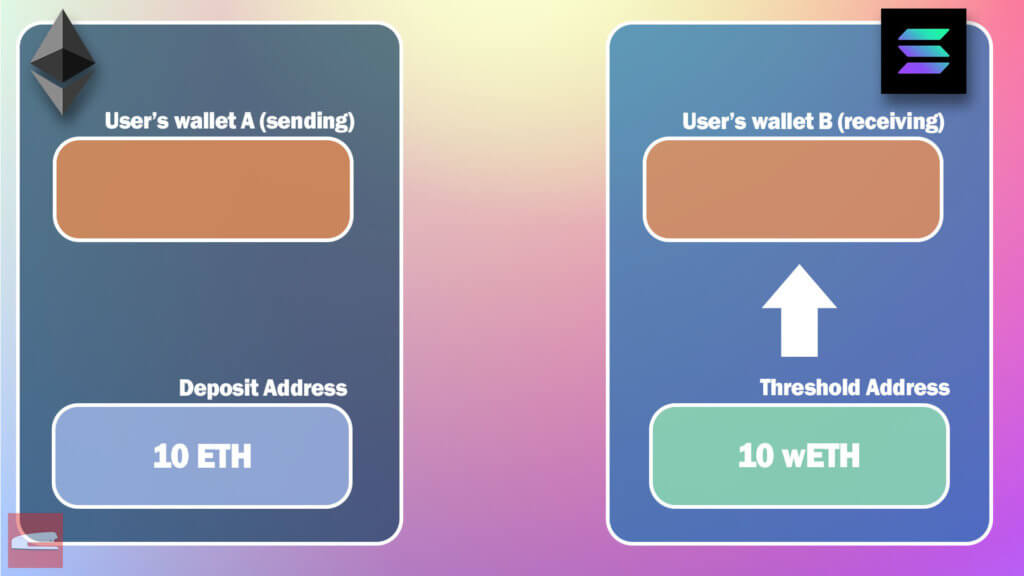
Axelar network will monitor the deposit address for the transfer amount (10 ETH) And once confirmed, Axelar network will then create a transaction on receiving blockchain (in this case, Solana) to send Solana-wrapped version of ETH from Axelar’s threshold account to the user’s wallet.
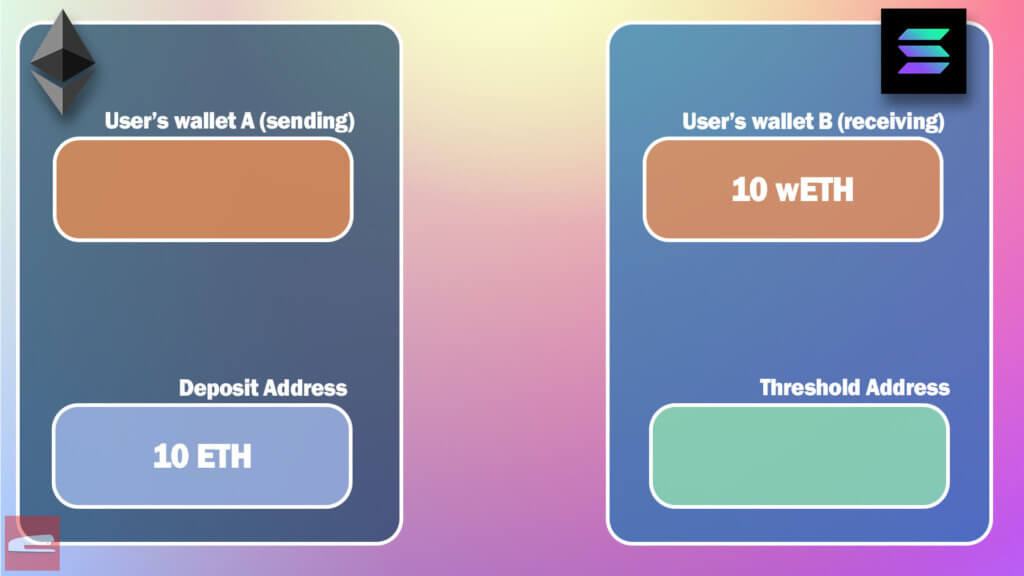
Once transaction is confirmed and user has received 10 wETH, the cross-chain transfer is completed.
Benefits of using Axelar
So how is Axelar better than traditional cross-chain solution?
Interoperability. With Axelar, any blockchains and decentralized applications can proceed with cross-chain transfer with minimal effort (by setting up threshold bridge account and preparing API call via CTP)
Upgradability. Developers don’t need to rewrite their application logic if there is any change to blockchain’s consensus or transaction format.
Security. Since all the cross-chain transfer states and transactions will be monitored by Axelar’s validators network. (In other words, Axelar leverage the blockchain consensus to ensure maximum security and prevent any kinds of forging)
Decentralization. Users can exercise governance control over Axelar network via voting. (ex. Vote for supporting new blockchains, allocate reimbursement funds in case of unexpected events, etc.)
Who’s backing Axelar
Here is the list of well-known Axelar backers/Investors.
- Galaxy Digital
- Coinbase Venture
- Binance
- SCB10X
- Do Kwon
- Polychain Capital
- Dragonfly Capital
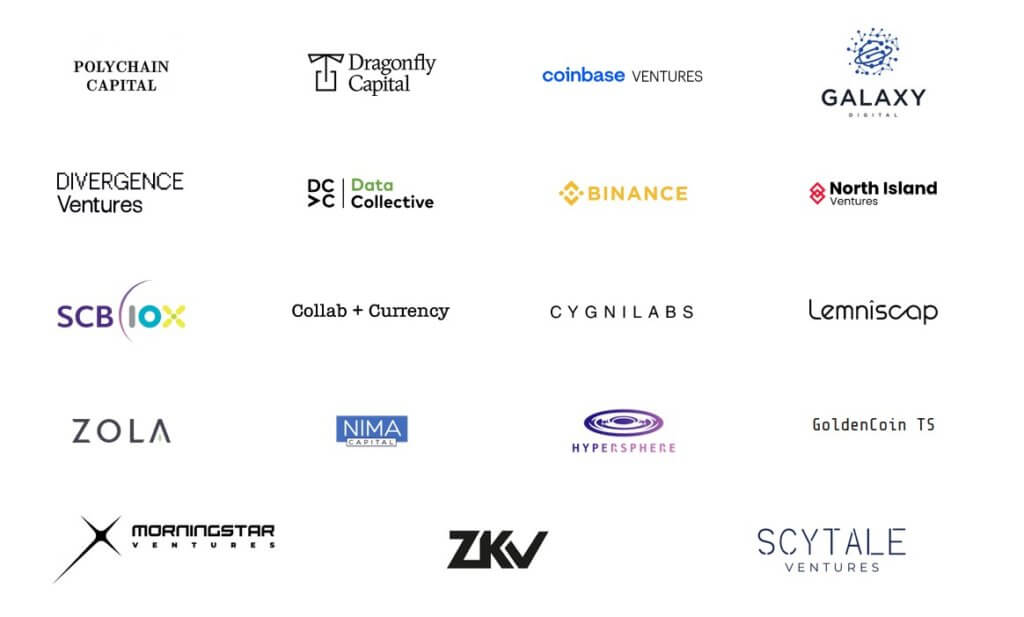
(Image from Axelar Network’s official website)
Summary
Mass adoption of cryptocurrency is coming and the growing of blockchains and DApps is inevitable. And Axelar is going to play vital role in this space. In near future, Centralized Exchange can list new coin and rapidly support deposit and withdrawal from/to any network. Decentralized Exchange can easily open new liquidity pools with cross-chain assets. New projects can proceed with multi-chain IDO. Users can move their asset freely to respond with investment opportunities without cross-chain limitation holding them back.
The Future of Blockchain is here 🙂
